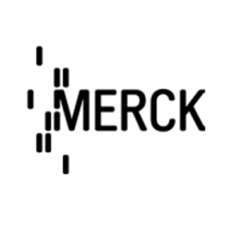· Modern printed high-performance polymers from Merck provide for power generation by futuristic solar trees at the German Pavilion
· As part of the Organic Photovoltaic Technology Consortium, Merck wants to raise awareness of the resource-conserving, flexible and cost-effective technology
· Color solar panels create new building design perspectives for architects
Darmstadt, Germany, May 07, 2015 – The German Pavilion at EXPO 2015 in Milan has integrated a new solar cell technology into architecture: flexible organic photovoltaics (OPV). With its innovative materials, Merck is providing the key active component of the so-called solar trees that feature this new technology. Visitors to the World Expo, which opened in May, can experience the energy-efficient modules that have been integrated into stylized trees. The futuristic plants are a central design element of the German Pavilion. They symbolize idea seedlings, thus embodying the pavilion’s name “Fields of Ideas”. Germany is presenting itself as a vital, fertile landscape filled with ideas to nourish the future. The power-generating OPV modules in the solar trees are produced with printable formulations of modern high-performance polymers that Merck offers under the lisicon® brand name. The blue color of the hexagonal OPV modules comes from Merck materials. They convert the incident light into charge carriers that can be collected in order to generate electricity. The integrated OPV system is being realized by a network of partners: the Organic Photovoltaic Technology Consortium (ARGE OPV) – consisting of the companies Belectric OPV, Carl Stahl, Hager SE as well as U.I. Lapp, Merck, and Schmidhuber – with support from the German Federal Ministry of Education and Research.
Brian Daniels, Head of the Advanced Technologies business unit at Merck, is delighted by the attention the future technology has attracted in Milan: “Organic photovoltaics is one of our key growth platforms, in which we develop innovative materials for the cost-effective production of flexible, printed solar panels. These panels are not only efficient and long-lived, but also beautiful for architectural applications. The solar trees at the Expo in Milan are a great example of how these features inspire architects for smart buildings with energizing facades. OPV has the potential to change modern city life. With OPV we can attach single solar-farms to each building so that the countryside can be used to producing food or remain beautifully natural. This ties in perfectly with the theme of the Expo, which is ‘Feeding the Planet, Energy for Life'”.


























